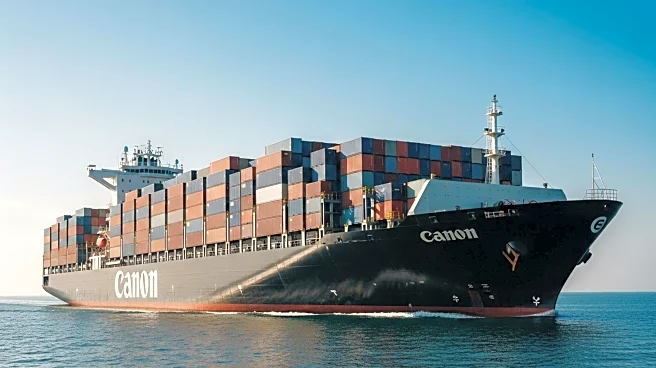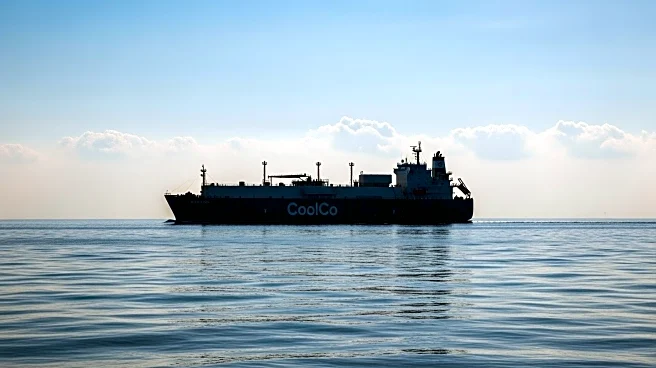What's Happening?
Niels Rasmussen, Chief Shipping Analyst at BIMCO, has reported an increase in ship demand growth forecast for 2025, particularly in trade lanes not bound for the U.S. The forecast has been adjusted to 4.5-5.5% for 2025, while maintaining a 2.5-3.5% growth for 2026. This adjustment comes amid full implementation of U.S. tariff increases, which have led to weaker import volumes to North America, showing negative year-on-year growth since April. Despite this, global cargo volumes are expected to grow by 2.5-3.5% in both 2025 and 2026, with resilient growth in regions outside North America, such as Asian exports to Sub-Saharan Africa, South & Central America, and Europe & Mediterranean regions. The demand remains elevated due to Cape of Good Hope routings, as Suez Canal transits are significantly reduced following attacks in the Red Sea.
Why It's Important?
The shift in demand growth outside U.S.-bound trade lanes highlights the impact of geopolitical tensions and tariff policies on global shipping dynamics. The reduced import volumes to North America could affect U.S. businesses reliant on international trade, potentially leading to higher costs and supply chain disruptions. Conversely, regions experiencing growth may benefit from increased trade opportunities and economic activity. The forecasted stabilization of freight rates in 2026 suggests potential relief for shipping companies facing current market volatility. This development underscores the interconnectedness of global trade and the influence of political decisions on economic outcomes.
What's Next?
As the market conditions and freight rates are expected to weaken further in 2025, stakeholders in the shipping industry may need to adapt to changing demand patterns and tariff impacts. The anticipated stabilization of freight rates in 2026 could provide a more predictable environment for planning and investment. Shipping companies might explore alternative routes and strategies to mitigate risks associated with geopolitical conflicts and tariff changes. Monitoring developments in the Red Sea and potential changes in Suez Canal transits will be crucial for future demand forecasts.
Beyond the Headlines
The ongoing geopolitical tensions affecting shipping routes, such as the attacks in the Red Sea, highlight the vulnerability of global trade to regional conflicts. The reliance on alternative routes like the Cape of Good Hope underscores the need for strategic planning in the shipping industry. Additionally, the full implementation of U.S. tariffs reflects broader trade policy shifts that could have long-term implications for international relations and economic stability.











